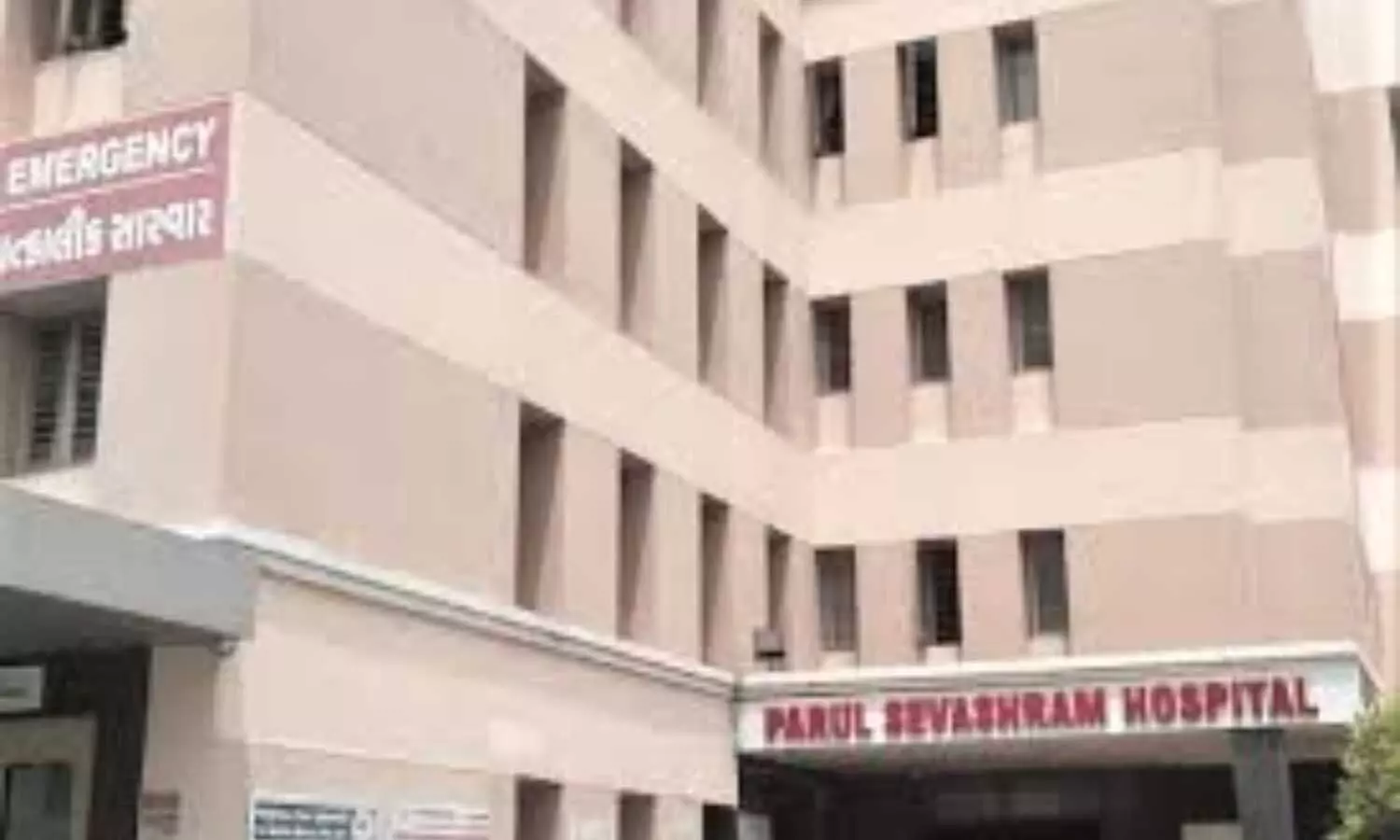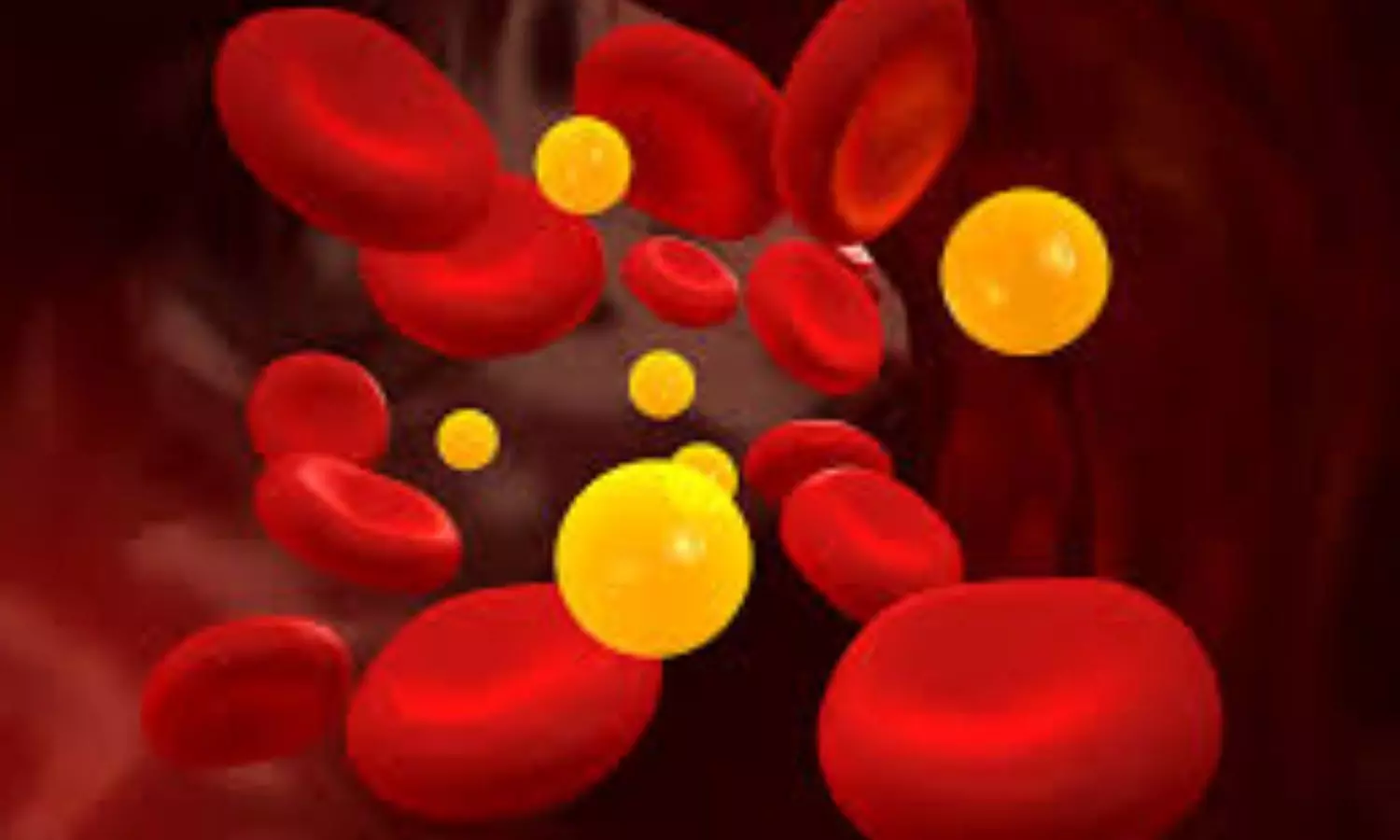Multiple sclerosis trial suggests medication and cognitive behavioral therapy can reduce fatigue
Powered by WPeMatico
Powered by WPeMatico
Powered by WPeMatico
Powered by WPeMatico
Powered by WPeMatico

Chhatrapati Sambhajinagar: A doctor died by suicide in Maharashtra’s Parbhani district after she was allegedly harassed by her husband and in-law who were pressuring her to bring Rs 1 crore from her parents, police said on Wednesday.
According to the FIR, Dr Priyanka Bhumre married Beed resident Nilesh Vharkate in 2022. After about two months, her in-laws allegedly demanded Rs 1 crore to set up a hospital and started harassing her mentally and physically.
On her complaint, police in August this year booked Nilesh, his parents, brother and sister for domestic violence. She then started living with her mother in Palam town in the Parbhani district, but her spouse and his kin continued to pressure her over the phone for money, as per the FIR.
Also Read:Navi Mumbai doctor allegedly demands 20 lakh dowry, FIR lodged
Around 3 pm on Monday, Dr Priyanka got a call and went to the upper floor of her mother’s house. Later, a relative found her lying motionless on the floor, while a scarf was hanging from a hook on the ceiling. She was taken to a hospital where doctors declared her dead, said the FIR.
Acting on her mother’s complaint, the Palam police booked Dr Priyanka’s husband and four relatives for abetment of suicide, the FIR said.
Also Read:Orthopaedician allegedly demands Rs 50 lakh dowry, FIR lodged
Powered by WPeMatico

Kolkata: Protesting against the state government, an on-duty medical officer of the Kolkata Municipal Corporation (KMC) was arrested on Tuesday evening during the ‘Durga Puja Carnival’ for allegedly wearing a message t-shirt and a badge in solidarity with the doctors agitating over the RG Kar hospital incident.
It came to light that he was wearing a black t-shirt with the message ‘sirdara bikri nei’ in Bengali, which roughly translates to ‘spine not for sale’. In addition, He was also wearing a badge that said ‘protiki anoshon’ or ‘symbolic hunger strike’ in a show of solidarity with the junior doctors who have been on fast unto death for the last 11 days.
Dr Tapabrata Roy, a member of the KMC medical team who was deployed on emergency duty during the Durga Puja Carnival on Red Road from 2 pm alleged that he was detained from the Red Road by the police.
Also read- RG Kar Case: Delhi Resident Doctors to stage protest outside Bengal Bhawan
“I was not told by the police where they were taking me after I was called by them while I was performing my duty on the Red Road. They clicked several photos of me. I had shown them my official duty slip, posting me on the Red Road,” he said after his release.
As the news of Mr Roy’s arrest spread, a large number of people, including his fellow medics, reached the Maidan police station, demanding his immediate release. Amid mounting pressure, the police released him. “I was released on a personal bond,” said Mr Roy.
Without elaborating, an officer of the Kolkata Police told PTI that it was a “preventive arrest”. Dr Roy is posted in KMC’s ward 123, which comprises parts of the Barisha area in southwest Kolkata.
The stand-off between the doctors and the police over Roy’s arrest added fresh fuel to the fire of protest that was lighted by the rape and murder of a medic at the RG Kar Medical College and Hospital on August 9.
The state government organised the show with much pomp amid the fast unto death by the junior doctors, demanding justice for the deceased medic.
Condemning the police action and showing their full support to Dr Roy, the Bengal chapter of the Indian Medical Association stated that he was on a symbolic Hunger Strike, but was performing his duties sincerely.
In a press release, the association mentioned, “It is very unfortunate to note that Dr Tapabrata Ray, a Medical Officer Kolkata Municipal Corporation & an important Leader of Junior Doctors’ Network (JDN) of IMA Bengal as well as Office bearer of IMA Santragachi Branch, while performing official duties at Red Road during Durga Puja Carnival, has been taken to Maidan Police Station & has been detained there just for wearing a Badge on his dress supporting the nationwide call of symbolic Hunger Strike (Dawn to Dusk) of Indian Medical Association Head Quarters.
We do therefore strongly condemn such attitude of Kolkata Police & demand immediate release of Dr Tapabrata Roy in a dignified manner, as otherwise IMA Action Committee will be forced to take further strong steps.”
Also read- RG Kar Stir: 2 KGMU Lucknow doctors join hunger strike
Powered by WPeMatico

The NABH Digital Health Standards evaluate hospitals based on their use of digital technologies to enhance clinical care, patient safety, and internal processes. Parul Sevashram Hospital is also an ABDM (Ayushman Bharat Digital Mission) compliant hospital and has implemented key digital health initiatives, such as an integrated Hospital Management Information System (HMIS), paperless patient records, and a telemedicine platform to reach underserved regions.
Powered by WPeMatico

Gestational diabetes mellitus (GDM) is defined as sugar intolerance during pregnancy and usually occurs during the 24th to 28th week of pregnancy.
Gestational diabetes associated with higher refer rate in hearing screening of newborns, suggests study published in the Annals of Otology, Rhinology & Laryngology.
Gestational diabetes mellitus (GDM) is associated with several adverse health conditions in newborns such as preterm birth, hyperbilirubinemia, macrosomia, respiratory distress. However, the effect of GDM on the hearing sensitivity of newborns is still unclear. The study aimed to explore the effect of GDM on newborn hearing. The study aimed to explore the effect of GDM on newborn hearing. A systematic search was conducted using PubMed, Scopus, and CHINAL databases. Keywords like “gestational diabetes,” “diabetic pregnancies,” “hearing loss,” “hearing impairment,” and “hearing disorder” were used to form a search string. The Rayyan software was used for screening procedure. The full-length articles were shortlisted, extracted, and appraised. Results: The 7 articles were included in the review. Findings suggest that hearing loss is more prevalent in newborns with GDM pregnancies than in non-GDM pregnancies. In addition, OAE findings were “referred during the first hearing screening of newborns with GDM pregnancies.” The refer rate of the first bilateral hearing screening was higher for newborns with GDM pregnancies. Furthermore, children of diabetic pregnancies were found to be at risk of bilateral hearing loss, particularly sensorineural in nature. The present systematic review suggests an association between GDM and a higher refer rate in hearing screening. A multidisciplinary collaboration between gynecologists, pediatricians, and audiologists can smoothen the early detection of hearing loss in newborns with GDM pregnancies, leading to early intervention and better clinical outcomes to improve the quality of life of affected newborns.
Reference:
Aggarwal K, Ravi R. Effect of Gestational Diabetes Mellitus on Newborn Hearing: A Systematic Review. Annals of Otology, Rhinology & Laryngology. 2024;0(0). doi:10.1177/00034894241287014
Keywords:
Gestational, diabetes, associated, higher, refer, rate, hearing, screening, newborns, suggests, study , Aggarwal K, Ravi R
Powered by WPeMatico

A history of COVID-19 can double the risk of heart attack, stroke or death according to new research led by Cleveland Clinic and the University of Southern California.
The study found that people with any type of COVID-19 infection were twice as likely to have a major cardiac event, such as heart attack, stroke or even death, for up to three years after diagnosis. The risk was significantly higher for patients hospitalized for COVID-19 and more of a determinant than a previous history of heart disease.
Further genetic analysis also revealed individuals with a blood type other an O (such as A, B or AB) were twice as likely to experience an adverse cardiovascular event after COVID-19 than those with an O-blood type.
Published in Arteriosclerosis, Thrombosis, and Vascular Biology, the researchers used UK Biobank data from 10,005 people who had COVID-19 and 217,730 people who did not get infected between February to December 2020.
“Worldwide over a billion people have already experienced COVID-19. The findings reported are not a small effect in a small subgroup,” said co-senior study author Stanley Hazen, M.D., Ph.D., chair of Cardiovascular and Metabolic Sciences in Cleveland Clinic’s Lerner Research Institute and co-section head of Preventive Cardiology. “The results included nearly a quarter million people and point to a finding of global healthcare importance that promises to translate into a rise in cardiovascular disease globally.”
Certain genetic variants are already linked to coronary artery disease, heart attack and COVID-19 infection. The researchers completed a genetic analysis to see if any of these known genetic variants contribute to elevated coronary artery disease risk after COVID-19. None of the known genetic variants were drivers of the enhanced cardiovascular events observed post COVID-19. Instead, the data highlighted an association between elevated risk and blood type.
Previous research has shown that people who have A, B or AB blood types were also more susceptible to contracting COVID-19.
“These findings reveal while it’s an upper respiratory tract infection, COVID-19 has a variety of health implications and underscores that we should consider history of prior COVID-19 infection when formulating cardiovascular disease preventive plans and goals,” said Dr. Hazen.
“The association uncovered by our research indicates a potential interaction between the virus and the piece of our genetic code that determines blood type and signals the need for further investigation,” said Dr. Hazen. “A better understanding of what COVID-19 does at the molecular level may potentially teach us about pathways linked to cardiovascular disease risk.”
Hooman Allayee, PhD, of USC’s Keck School of Medicine, was co-senior author of the paper.
“Our data suggesting that risk of heart attacks and strokes was especially higher among COVID-19 patients with A, B, or AB blood types has significant clinical implications,” Dr. Allayee said.
“Given our collective observations and that 60% of the world’s population have these non-O blood types, our study raises important questions about whether more aggressive cardiovascular risk reduction efforts should be considered, possibly by taking into consideration an individual’s genetic makeup.”
The findings show that the long-term risk associated with COVID-19 “continues to pose a significant public health burden” and that further investigation is needed, according to the authors.
Reference:
James R. Hilser, Neal J. Spencer, Kimia Afshari, Frank D. Gilliland, Howard Hu, Arjun Deb, COVID-19 Is a Coronary Artery Disease Risk Equivalent and Exhibits a Genetic Interaction With ABO Blood Type, Arteriosclerosis Thrombosis and Vascular Biology, https://doi.org/10.1161/ATVBAHA.124.321001.
Powered by WPeMatico

USA: The American Heart Association (AHA) has released a scientific statemen The scientific statement, published in Arteriosclerosis, Thrombosis, and Vascular Biology, explores its utility, clinical outcomes, and practical implementation, providing a comprehensive overview of its role in managing patients with elevated lipoprotein levels and cardiovascular risk.
The new scientific statement has highlighted the often underused role of lipoprotein apheresis as a therapeutic option for both children and adults with familial hypercholesterolemia (FH), elevated lipoprotein(a) [Lp(a)], and high levels of low-density lipoprotein cholesterol (LDL-C).
The procedure significantly lowers LDL-C and Lp(a) levels by 65% to 85% in just one session, making it an important emerging option for patients with familial hypercholesterolemia who do not adequately respond to standard treatments, especially those at high risk for atherosclerotic cardiovascular disease (ASCVD).
In the scientific statement on lipoprotein apheresis, the writing committee, led by Dr. Laurence S. Sperling from Emory University, reviewed the procedure’s historical development, efficacy, available devices, and outcomes. They highlighted the significant underdiagnosis and undertreatment of FH, one of the most common genetic lipid disorders.
The U.S. Food and Drug Administration (FDA) has approved lipoprotein apheresis for patients with FH who have not responded to lifestyle changes and maximum tolerated LDL-C–lowering medications. This treatment, the only FDA-approved option for lowering lipoprotein(a) [Lp(a)], is specifically indicated for patients with LDL-C levels exceeding 100 mg/dL but remains underutilized among high-risk individuals struggling to control their lipoprotein levels.
The LIPOSORBER LA-15 system is designed for patients with homozygous FH (HoFH) and LDL-C levels over 500 mg/dL, as well as heterozygous FH (HeFH) patients with LDL-C levels of at least 300 mg/dL. Additionally, HeFH patients with LDL-C levels of at least 100 mg/dL, Lp(a) levels of 60 mg/dL or higher, and documented coronary or peripheral artery disease (CAD or PAD) may also benefit from this treatment.
A single session of lipid apheresis can reduce LDL-C levels by up to 85%, though maintaining these lower levels requires frequent treatments due to rapid rebound. These devices target apoB-containing lipoproteins, improving various vascular and inflammatory biomarkers.
While lipid apheresis has shown benefits such as enhanced endothelial function and reduced coagulation factors, its impact on long-term outcomes independent of lipoprotein reduction remains uncertain. Observational studies indicate that lipid apheresis can reduce major adverse cardiovascular events (MACE) by 50% to 85%, particularly in patients with elevated Lp(a) and LDL-C.
The committee emphasized that around 11,000 to 15,000 Americans with FH may qualify for lipid apheresis, yet fewer than 400 currently receive the treatment. Barriers to access include limited availability—only 33 U.S. states have lipid apheresis centers—and a lack of awareness among both patients and healthcare providers.
The annual cost of lipid apheresis ranges from $50,000 to $150,000, significantly lower than some other LDL-lowering therapies, yet the high cost, treatment frequency, and travel distance complicate patient access. The committee called for increased referrals to existing centers and the establishment of more facilities, along with enhanced patient education.
In conclusion, while lipoprotein apheresis represents a valuable option for high-risk patients, addressing barriers to access and improving awareness is crucial to ensure that more individuals can benefit from this treatment.
Reference:
Gianos E, Duell PB, Toth PP, Moriarty PM, Thompson GR, Brinton EA, Hudgins LC, Nametka M, Byrne KH, Raghuveer G, Nedungadi P, Sperling LS; American Heart Association Council on Arteriosclerosis, Thrombosis and Vascular Biology; Council on Cardiovascular and Stroke Nursing; Council on Clinical Cardiology; Council on Lifelong Congenital Heart Disease and Heart Health in the Young; and Council on Peripheral Vascular Disease. Lipoprotein Apheresis: Utility, Outcomes, and Implementation in Clinical Practice: A Scientific Statement From the American Heart Association. Arterioscler Thromb Vasc Biol. 2024 Oct 7. doi: 10.1161/ATV.0000000000000177. Epub ahead of print. PMID: 39370995.
Powered by WPeMatico
